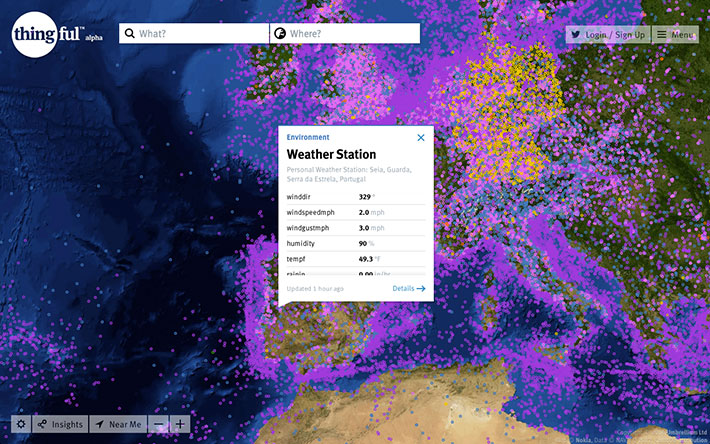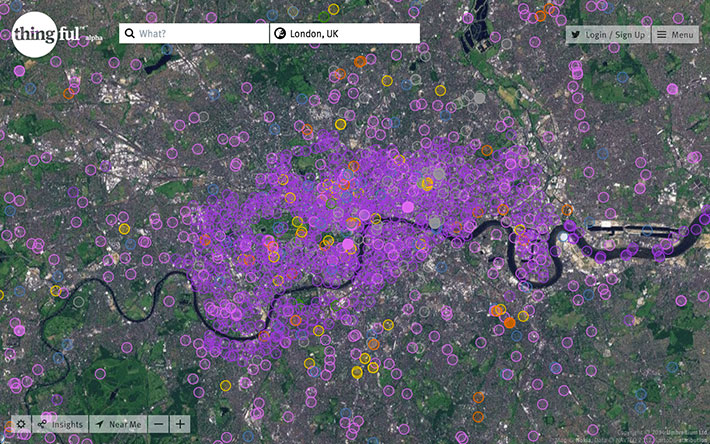Thingful.net is a search engine for the Internet of Things, providing a unique geographical index of real-time data from connected objects around the world, including energy, radiation, weather, and air quality devices as well as seismographs, iBeacons, ships, aircraft and even animal trackers.
Thingful.net’s powerful search capabilities enable people to find devices, datasets and realtime data sources by geolocation across many popular Internet of Things networks, and presents them using a proprietary IoT device data search ranking methodology. Millions of connected objects & sensors across the planet generate real-time open data and Thingful enables them to interoperate.
Thingful’s Datapipes make it quick and easy to find and use the IoT data that’s most valuable to you, providing access to the world’s largest searchable index of public and private connected objects and sensors around the world, from dozens of different IoT networks and infrastructures.
Features
- A customised web app and platform, built on on our proprietary IoT Search Engine, Thingful.net
- Includes millions of existing public IoT data resources
- End users (residents, etc.) can create accounts, set up time-series experiments and generate statistical and analytic visualisations
- Integrate specific local IoT data repositories
- Enables people and companies to claim and verify ownership of their things using a provenance mechanism
- Users can also add objects to a Watchlist in order to keep track of them, monitor their realtime status and get notifications when they change


Expected Outcomes
As a result of deploying IoT Data Explorer IoT managers can:
- Kickstart IoT innovation in a community
- Help residents and communities learn about IoT data and the environment around them
- Analyse trends, discover patterns, identify anomalies
- Solve problems using existing IoT data
Use Cases
- Local authority with ‘messy’ datasets requiring complex interoperability
- Community engagement initiatives built around data and data education
- Companies and campus sensor deployments with data generated by multiple third-party services